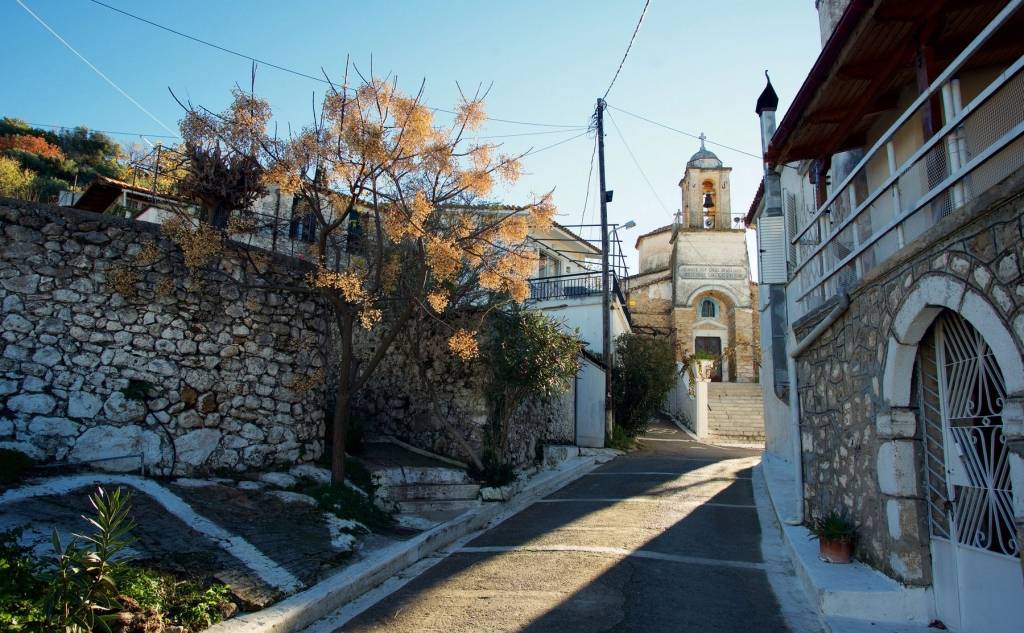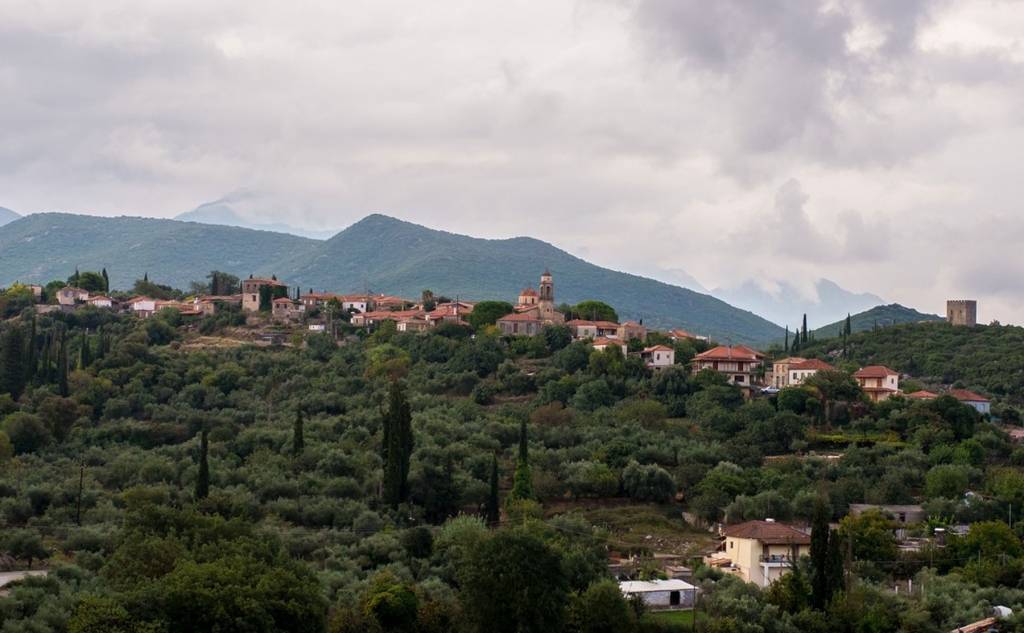






The traditional village of Stavropigio (formerly Varousia) is built on a hillside, at a lower altitude than the Castle of Zarnata, dating from the 15th century to the end of the 17th century. The village is 1.5 kilometres from Kampos Avia and 22 kilometres from Kalamata.
The oldest name, of Slavic origin, Varousia, probably comes from the Turkish word "varosh", which means "neighbourhood outside the castle - suburb", where affluent Christian families lived during the Turkish occupation. The current name of the village, Stavropigio, remained a toponym from the title "Stavropigio Zarnata" when the village was the seat of the bishopric of Zarnata. Also, the identification of polygonal building ruins at the foundations of the Castle of Zarnata has led to the connection of the area with ancient Gerenia.
In Stavropigio, visitors can visit the preserved church of Zoodochos Pigi, as well as the double-aisled cross-roofed church of Agios (Saint) Ioannis the Forerunner and Agios Nikolaos. The northern aisle is dedicated to John the Baptist and the southern to Agios Nikolas, while both halls communicate. In the middle of the west side, a later belfry of 1810 rises, and the temple is recorded with more than one layer of frescoes.
At a distance of just one kilometre from Stavropigio is the Byzantine Monastery of Panagia "Androubevitsis", a 12th-13th century building with elements of Mani architecture. The monastery’s catholicon is dedicated to the Dormition of the Virgin and stands out for its important frescoes from the 13th century.